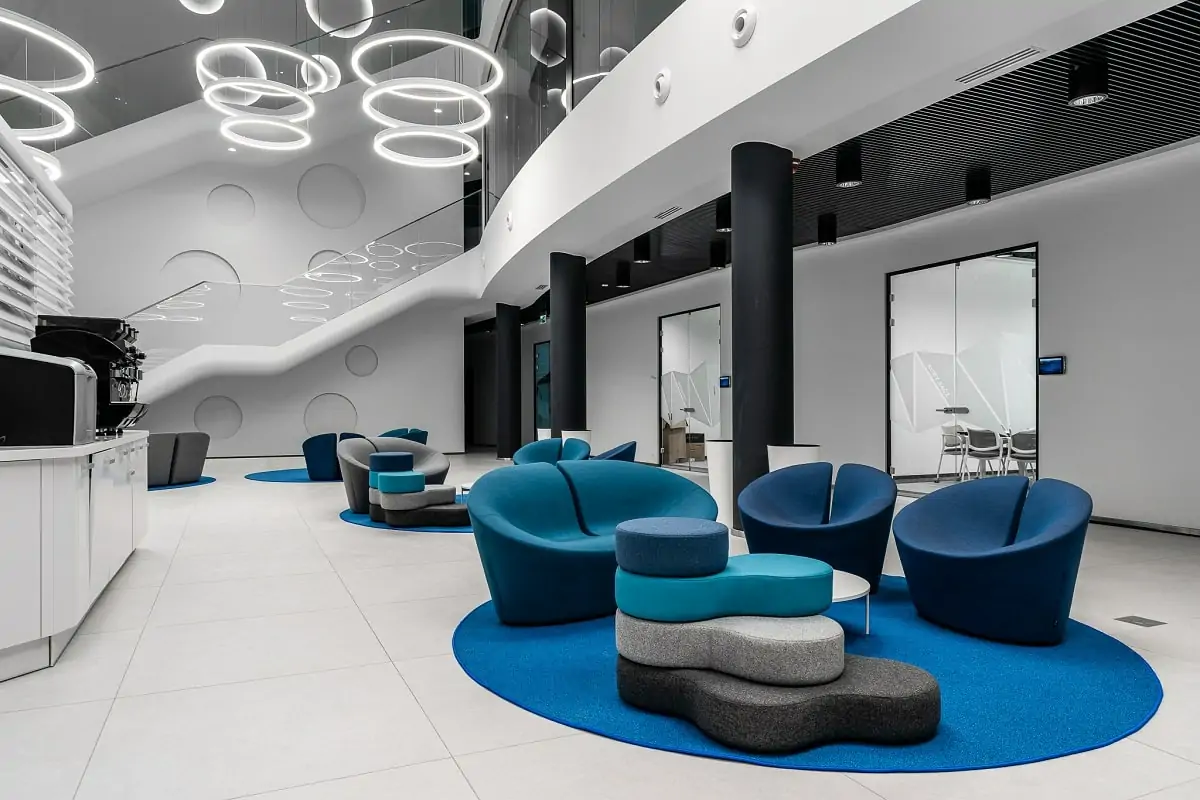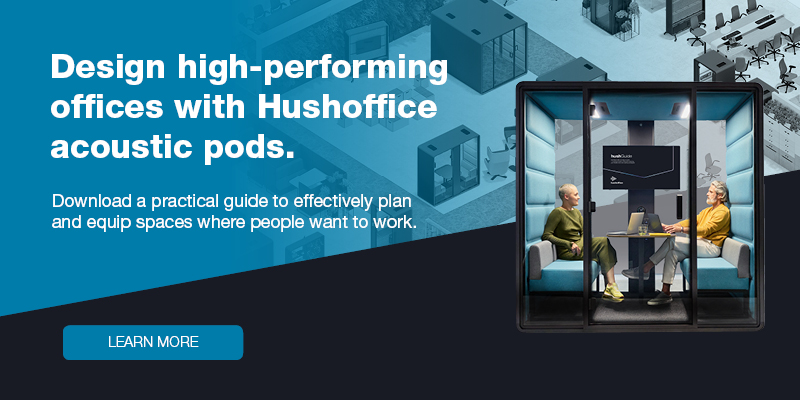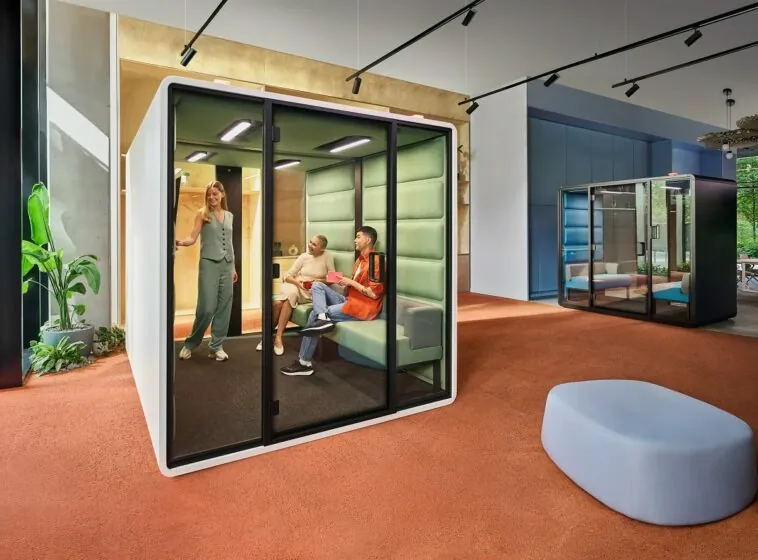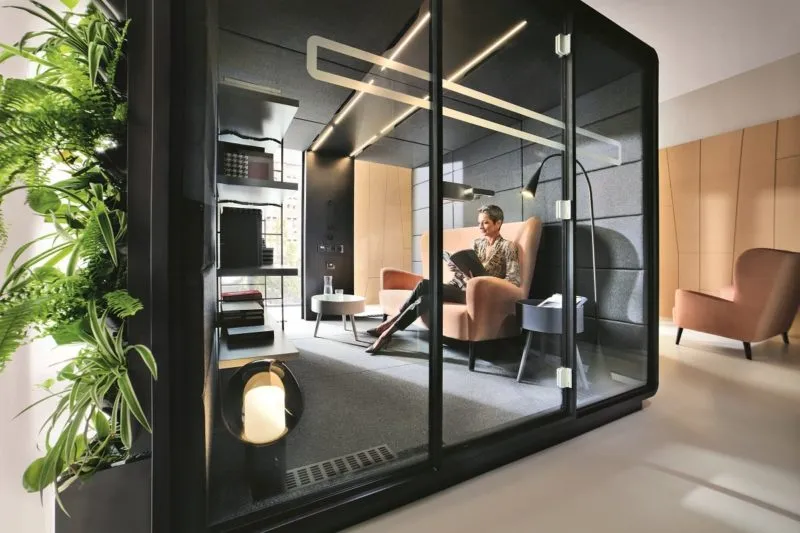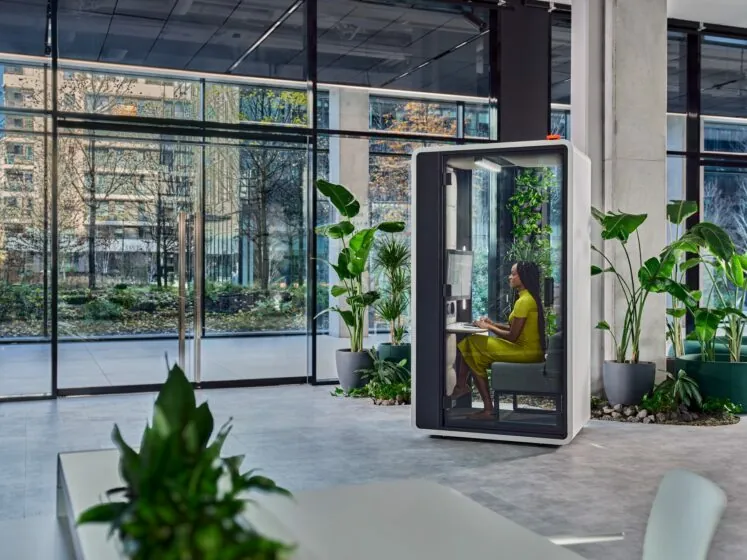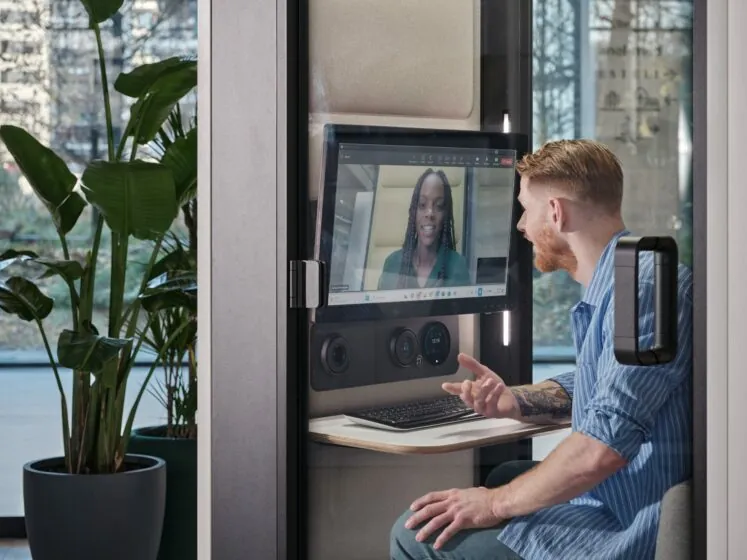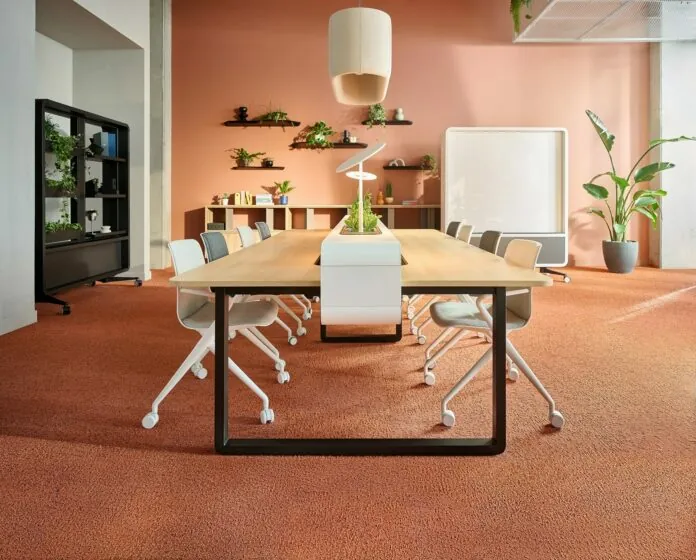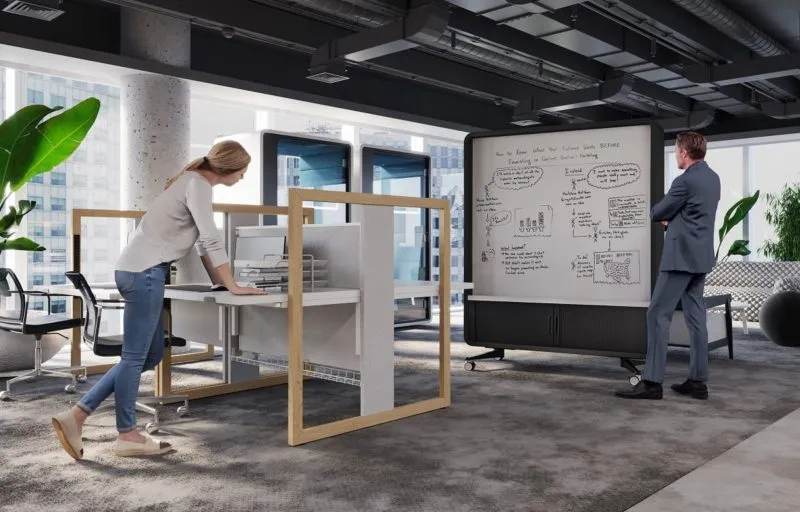Third places play a part in a hybrid work setting
- Posted on: 4 December 2023
- By: Hushoffice Team
Remote work and flexible working arrangements have gained widespread popularity. And in today’s working world, third places bridge the gap between the home and the office for many employees. There are a number of ways they can contribute to organisational success as well as employee well-being.
Let’s have a look.
Third places in a hybrid work setting – tl;dr
Third places refer to public, communal work spaces, such as cafés, coffeehouses, libraries, or collaborative work areas, functioning as informal, social, lively locations that can be used for a variety of activities. Their popularity has been on the increase as employees crave connection and a change of scenery to maximise their productivity.
Recent research shows that approximately 50% of remote workers spend some of their working day in a third place. Indeed, employees often use third places for work, doing so 2-3 times a week, and spending up to 4 hours each time. Using third places offers numerous benefits to workers, enabling them to unwind, feel part of the community, and enjoy a meal.
Although third places function effectively for hybrid teams, there are some work functions that they simply cannot fulfil, including meetings focusing on classified information, private calls with clients, or focused work requiring complete silence. To improve concentration during such tasks, we strongly recommend Hushoffice booths that provide impeccable acoustic privacy.
What are third places?
They are the third potential working environment after home (the first place) and the office (the second place), for example, a café or a library. Third places are communal, innovative settings where workers may concentrate, collaborate, and build relationships in an informal, revitalising atmosphere.
Is working from third places becoming the new normal?
Research from Swinburne shows that about 50% of remote employees spend some of their working day in a third place. Actually, employees who use third places for work do so 2-3 times a week, staying there up to 4 hours, and spending more or less $30 a visit.
The top three advantages of working in third places
Using third places benefits workers in three main aspects: they can unwind, feel part of the community, and enjoy a meal. Most people who use them confirm their beneficial impact on wellness. According to some, third places offer a relief from omnipresent technology. Others treat them as a refresh for creativity, or a way to combat loneliness. And there are people who use them to meet with clients or peers, usually over a meal.
Examples of third places include coffeehouses, community centres, or parks
Generally, third places are a refreshing alternative to the solitude of remote work, or the formal character of the office. According to the originator of the idea of third places, Ray Oldenburg, “Your third place is where you relax in public, where you encounter familiar faces and make new acquaintances.”
Third places make room for spontaneous, productivity-free conversations.
They are lively by nature. Due to their energetic vibe, they foster creative thought, allow people to unwind, and enable natural interaction.
Third places are gaining popularity as a significant work-life balance enhancer, granting employees more autonomy over their working environment. To be more precise, they allow you to choose the location that works for you best, be it a bookshop or a fancy bar. The possibility of choosing your work setting freely gives you a sense of freedom and control, contributing to greater job satisfaction, and a more positive attitude towards work
– says Mateusz Barczyk, Senior Brand Manager, Hushoffice.
Freelancers can work from their local coworking spaces whenever they need to change scenery…
And it works well, because such spaces are equipped with ergonomic workstations and reliable Wi-Fi, ensuring productive workflow. They give a sense of togetherness with like-minded people, strengthening motivation. Spontaneous collaboration with other professionals, and an opportunity to meet potential clients during networking events are significant benefits, too.
Software engineers may work from lively cafés when they need total creative immersion.
Background hum and the scent of freshly ground coffee create a cosy atmosphere. The unique vibe of a coffeehouse fosters total focus. Spontaneous conversations with patrons provide valuable downtime as well as creative inspiration.
A founder may visit a collaborative space within the corporate campus to switch things up…
It’s a space where he can run brainstorming sessions with his team and meet with prospective investors. He may also host client presentations in a welcoming atmosphere. The space is conveniently close to the office, and its innovative design and collective assets foster comfort.
Third places create a sense of community.
One of their key criteria is that they “provide the feeling of inclusiveness and belonging associated with participating in a group’s social activities, without the rigidity of policy or exclusiveness of club or organisation membership.”
Without interacting with others, hybrid working becomes monotonous and uninspiring.
Third places act as facilitators of spontaneous interactions that stimulate creative thinking and idea sharing. According to Dr. Narae Lee, who has studied third places, they are social hubs “closely tied to social wellbeing,” in times when society is “increasingly lonely.”
Third places can considerably enhance employee mental wellbeing.
Probably, the most important psychological benefit being the reduction of isolation and loneliness.
Third places offer many benefits for hybrid teams. First of all, they can reduce stress levels and the time limitations related to daily commuting. They function as melting pots, bringing together people from different backgrounds and professions, offering a wide spectrum of perspectives. Allowing your employees to work from a variety of third places may also enhance your recruitment efforts. And, by doing so, you address workers’ individual needs: from introverts preferring quiet, less crowded environments, such as bookshops, to extroverts choosing the hustle and bustle of a diner, and so on
– says Mateusz Barczyk, Senior Brand Manager, Hushoffice.
How can you encourage your workers to use third places?
There are a number of easy ways to promote the use of third places within your organisation:
encourage flexibility in working arrangements, including flexible choice of work location for remote employees,
provide stipends, membership cards, or vouchers to co-working hubs or local coffeehouses,
organise periodic team meetings or events at preferred third places to make them part of your company culture,
invest in technological solutions supporting remote work, and effortless connectivity from any location,
present the advantages of third places to your employees in an educational presentation.
Note: in some contexts private office booths may be preferred over third places.
Third places are not suitable for all work contexts. These include settings when discretion is of utmost importance, for example, confidential discussions, or focused work sessions. In such cases, booths or pods provide employees with a more secure environment where they can discuss sensitive issues freely, without the fear of being overheard or misunderstood.
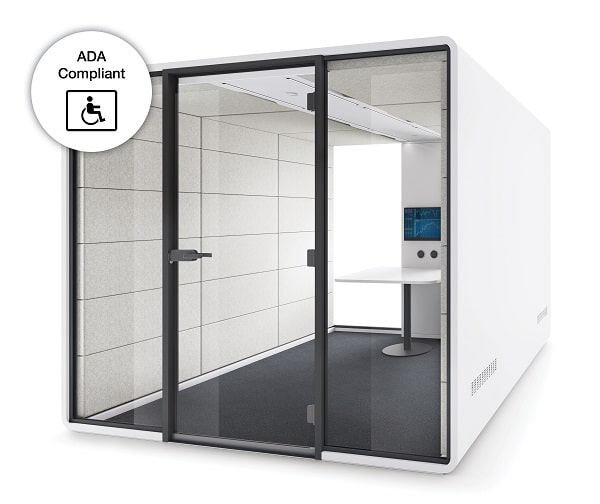
Too busy to run to the coffeehouse for a break? Take a break in hushMeet, instead.
Office booths, such as hushMeet, are quiet, private, independent environments providing a considerable level of privacy. In chaotic workspaces the seclusion offered by office booths can be a game changer, eliminating the need to use third places for peace and quiet.
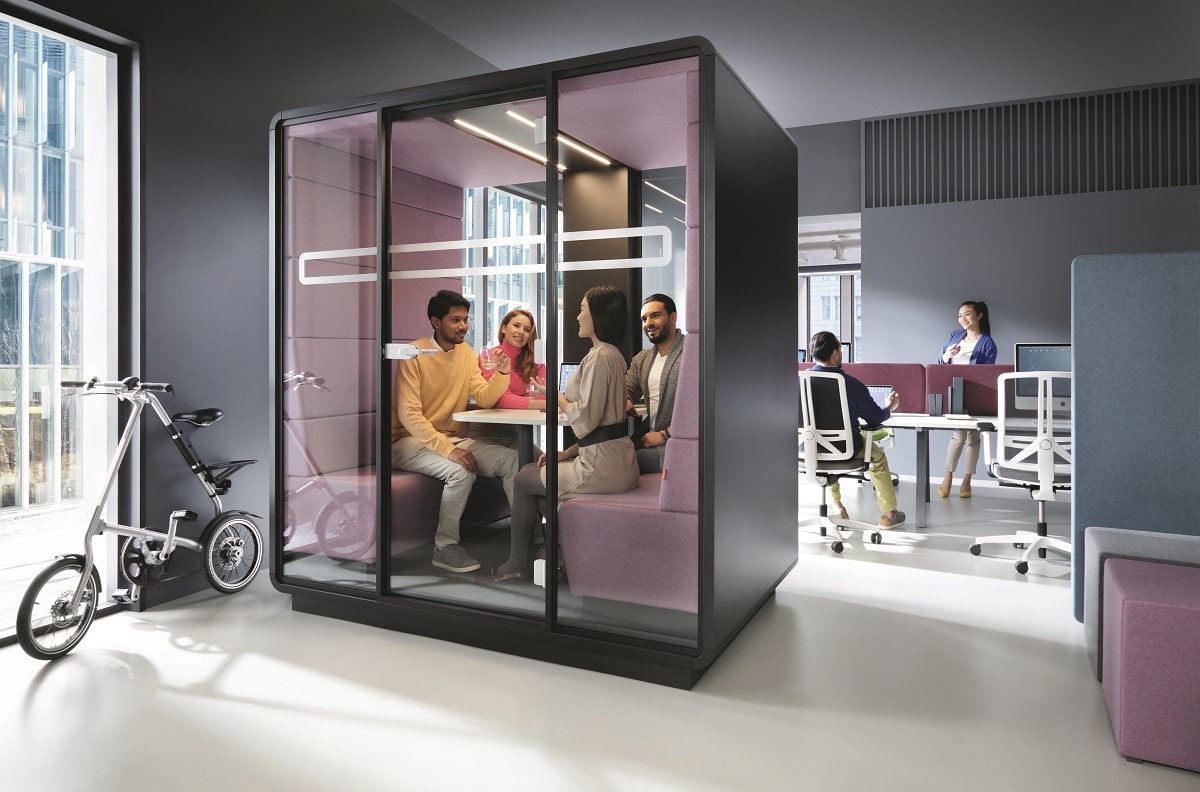
Third places function according to the first-come-first-served rule. Phone booths, such as hushPhone are bookable.
Phone booths provide workers with private work and meeting space whenever they need it, reducing the uncertainty of finding available space in a communal area.

Booths provide workers with what they are really looking for in third places – autonomy.
They grant more autonomy over one’s workspace and capacity, allowing workers to isolate in a quiet sanctuary of uninterrupted focus (such as hushHybrid) or gather in an acoustic retreat (such as hushMeet.L) whenever necessary, without being disturbed by the office hubbub.
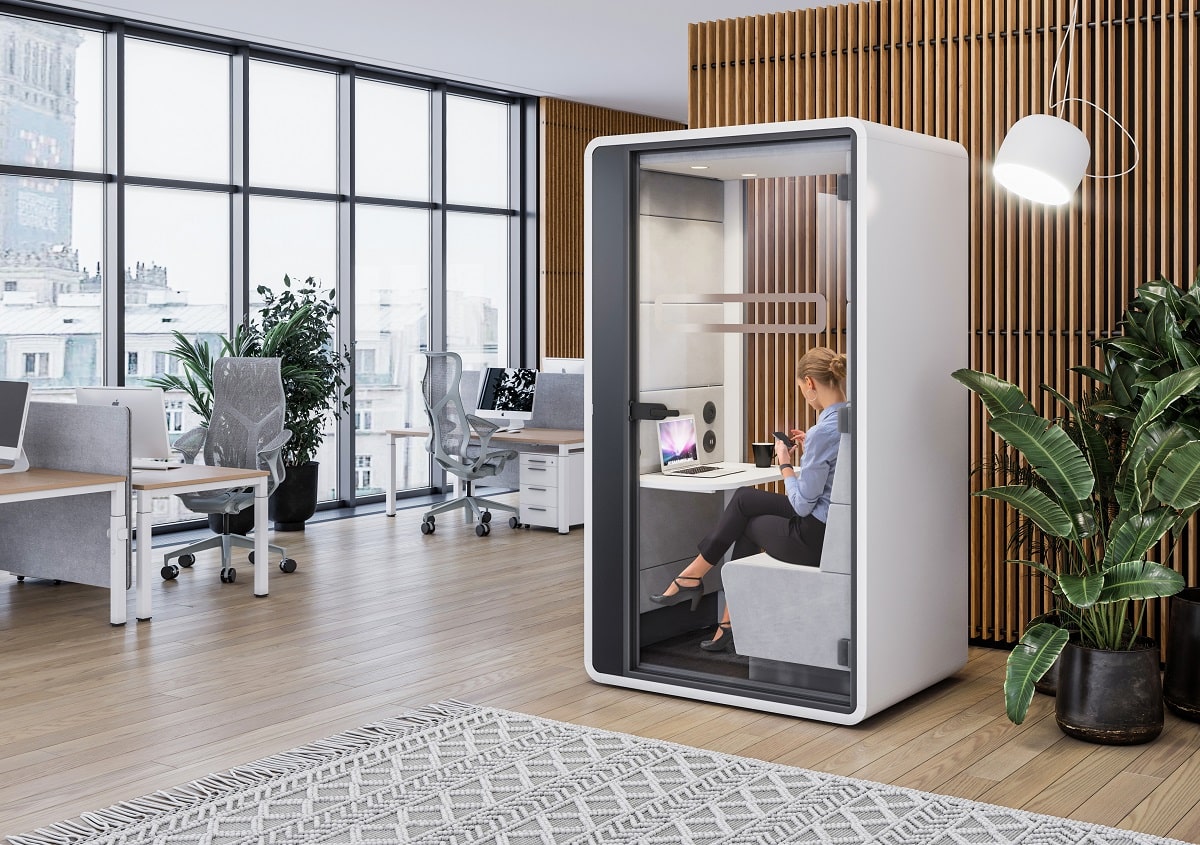
In fact, acoustic booths are third places within the office floor.
Another reason why workers choose third places is the willingness to change the surroundings. Booths offer such change within the office setting. While the office is a lively, dynamic workspace, a booth functions as a stable, quiet refuge that employees can use for relief whenever they feel overstimulated or overwhelmed.
Although third places have their crucial role in today’s working world, office booths are a better solution in some cases. Firstly, booths are just around the corner, eliminating the commute to a coffeehouse or similar third place. Also, they don’t generate any additional costs for employees, allowing them to save money they would spend while visiting local third places. What’s more, acoustic booths are secure, private workspaces, ensuring confidentiality during personal calls or sensitive discussions. They are acoustically impeccable, quiet, and sound-insulating. So, they create conditions much more conducive to focus for employees who need a quiet environment to think clearly. Summing up, office booths offer a quick, effortless change of scenery, a break from sensory overload, and a private workspace without the need to leave the office
– explains Mateusz Barczyk, Senior Brand Manager, Hushoffice.
What’s your opinion? Are third places here to stay? What options do pods, booths or cabins offer? Especially, for employees looking for various types of workspaces to accommodate their different range of tasks? If you have any questions concerning our Hushoffice collection of work and meeting booths, contact us here.
Third places in a hybrid work setting – tl;dr
Third places refer to public, communal work spaces, such as cafés, coffeehouses, libraries, or collaborative work areas, functioning as informal, social, lively locations that can be used for a variety of activities. Their popularity has been on the increase as employees crave connection and a change of scenery to maximise their productivity.
Recent research shows that approximately 50% of remote workers spend some of their working day in a third place. Indeed, employees often use third places for work, doing so 2-3 times a week, and spending up to 4 hours each time. Using third places offers numerous benefits to workers, enabling them to unwind, feel part of the community, and enjoy a meal.
Although third places function effectively for hybrid teams, there are some work functions that they simply cannot fulfil, including meetings focusing on classified information, private calls with clients, or focused work requiring complete silence. To improve concentration during such tasks, we strongly recommend Hushoffice booths that provide impeccable acoustic privacy.
Third places – frequently asked questions
What’s the function of third places?
Third places are communal spaces with an inviting, comfortable environment, offering people an opportunity to meet and connect with others. They encourage networking, socialising, creative thinking, and connectedness. Additionally, by offering flexibility in working arrangements, they improve work-life balance and facilitate remote work, meetings, or individual working sessions in a relaxing space.
What advantages do third places offer?
Third places are communal spaces that give people an opportunity to connect, talk, and build various relationships, fostering a deep sense of belonging and togetherness. What’s more, they offer excellent opportunities for business networking, which makes them highly beneficial for freelancers, entrepreneurs, and distant workers. They help overcome the feeling of isolation, foster creative thinking, and encourage idea sharing. Last but not least, they enhance work-life balance by providing an informal working environment for tasks that are carried out much more effectively in bustling surroundings.
What makes an effective third place?
An effective third place should be lively and communal, equipped with facilities needed for concentrative work, such as sockets and reliable Wi-Fi. However, in situations when acoustic privacy is required, a private meeting booth, such as hushMeet is a more recommendable solution.
